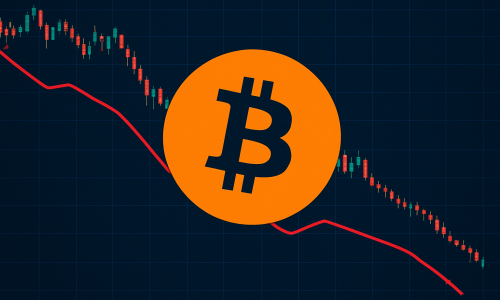Introduction
The cryptocurrency market is experiencing an unprecedented surge, with Bitcoin (BTC) reaching new all-time highs and the total market capitalization soaring past an astonishing $4.36 trillion. This monumental rally, which gained significant momentum in early October 2025, has sent ripples of euphoria throughout the digital asset ecosystem, marking a pivotal moment in its evolution.
Bitcoin’s Meteoric Rise
Bitcoin’s price began an aggressive upward trajectory during the first week of October, pushing past the $120,000 mark around October 3rd and subsequently breaking its previous all-time high of approximately $124,514 (set in mid-August 2025) to reach over $125,500 by October 5, 2025. This surge is underpinned by a confluence of macroeconomic factors, notably the ongoing US government shutdown which commenced on October 1, 2025, and growing expectations of further interest rate cuts by the Federal Reserve, positioning Bitcoin as a robust hedge against economic instability.
A $4.36 trillion market cap signifies a “structural re-rating of crypto in the global financial system,” solidifying its position as a major asset class on par with, or even exceeding, the GDPs of several developed nations.
Market Impact And Price Action
The current rally has seen remarkable price movements across major cryptocurrencies, reflecting strong investor confidence and significant capital rotation. Bitcoin’s ascent to over $125,000 has been the primary driver, pulling the broader market upwards. Ethereum (ETH) has also demonstrated substantial strength, testing the $4,600 mark, while other prominent altcoins like Solana (SOL) and Dogecoin (DOGE) have experienced notable price increases, though some smaller-cap altcoins have seen mild corrections after earlier surges, indicating a potential rotation of capital.
Trading volumes have soared, particularly in institutional-grade products. Aggregated Bitcoin futures open interest reached an astonishing $91.59 billion by October 5, 2025, indicating an unprecedented influx of institutional capital, especially on regulated platforms such as CME Group. Spot Bitcoin ETFs have witnessed substantial inflows, with approximately $5 billion in daily volume and $676 million in net inflows recorded on October 1 alone, contributing to $3.24 billion in net inflows during the week ending October 4, 2025. Spot Ethereum ETFs have also garnered significant attention, nearing $15 billion cumulatively. This sustained institutional interest suggests a more mature and stable foundation for the rally compared to previous retail-driven cycles.
Technical Analysis And Market Sentiment
Technically, Bitcoin’s break above its previous all-time high has turned that level into a strong psychological support. While the market is experiencing “Extreme Greed” according to the Crypto Fear and Greed Index, suggesting potential for short-term pullbacks, the underlying momentum remains robust. Analysts are eyeing key resistance levels beyond $125,000, with many predicting a path towards $135,000 to $143,000 by the end of October. This rally differs from past cycles by its strong institutional backing and the macroeconomic environment, which solidifies Bitcoin’s narrative as a hedge against traditional financial instability, rather than purely a speculative asset.
Community And Ecosystem Response
The crypto community’s response to this rally has been overwhelmingly euphoric. Social media platforms like X (formerly Twitter) and Reddit are alight with celebratory posts, bullish predictions, and trending hashtags such as “Uptober” and “BitcoinATH.” The sentiment is largely characterized by phrases like “WAGMI” (We’re All Gonna Make It) and “To The Moon,” reflecting collective optimism. While excitement is high, a cautious optimism also prevails, with some discussions acknowledging the market’s inherent volatility and the potential for short-term corrections.
Crypto influencers and thought leaders are largely echoing this bullish sentiment. Analysts from Standard Chartered predict Bitcoin could reach $135,000 in the near term and potentially $200,000 by year-end 2025. Cathie Wood of Ark Invest has even projected Bitcoin could exceed $3.8 million by 2030, while Coinbase Global CEO Brian Armstrong expects it to hit $1 million by 2030. Prominent figures like Ash Crypto anticipate a significant “altcoin wave” or “altseason,” where capital rotates into large-cap altcoins, followed by substantial surges in mid and low-cap altcoins.
What’s Next For Crypto?
The current rally positions the crypto market for a dynamic period ahead, with both short-term volatility and profound long-term growth potential. In the short term (Q4 2025), while robust bullish sentiment is expected to persist, healthy corrections and profit-taking are likely after Bitcoin’s rapid ascent. Bitcoin has already seen a mild pullback to around $123,877 on October 6, 2025, after briefly surpassing $125,000. Volatility is expected to remain high, particularly for altcoins, as capital flows and leverage fluctuate. However, underlying trends remain structurally solid, with any short-term dips likely viewed as buying opportunities.
The long-term outlook (2026 and beyond) is overwhelmingly optimistic. Bitcoin is solidifying its role as “digital gold,” a safe-haven asset amidst global inflationary pressures and economic instability. This narrative is further reinforced by substantial capital inflows into U.S.-listed spot Bitcoin and Ethereum ETFs, cementing their status as mainstream assets. The tokenization of real-world assets (RWAs) is emerging as a cornerstone trend, signifying crypto’s maturation into practical financial infrastructure. CME Group also plans to launch 24/7 crypto futures and options trading in early 2026, further enhancing market efficiency and liquidity.
The Role Of Decentralized Finance And Layer-2 Solutions In The 2025 Crypto Rally
The 2025 crypto rally is not solely a Bitcoin and Ethereum phenomenon. Decentralized Finance (DeFi) platforms and Layer-2 scaling solutions are playing an increasingly significant role in driving market activity and investor interest. DeFi protocols, built predominantly on Ethereum and other high-performance blockchains like Solana, Polygon, and Avalanche, are providing users with innovative financial services that rival traditional banking, including lending, borrowing, and yield farming. As retail and institutional adoption accelerates, the total value locked (TVL) in DeFi has surged to over $220 billion globally, highlighting the growing liquidity and confidence in these decentralized systems.
Layer-2 solutions are crucial in supporting this expansion by improving transaction throughput, reducing gas fees, and enhancing network scalability. Ethereum’s “Fusaka” upgrade, along with Solana’s “Alpenglow” enhancement, has contributed to faster transaction finality and lower costs, making it feasible for large-scale institutional deployments and retail users alike. These improvements not only support high-frequency trading and dApp usage but also encourage the creation of complex smart contracts for derivatives, synthetic assets, and algorithmic stablecoins.
Conclusion
The current crypto market rally, with Bitcoin at record highs and a $4.36 trillion total market valuation, represents a significant inflection point for the digital asset space. Key takeaways for investors and enthusiasts include the undeniable shift towards institutional-led growth, with major financial institutions and corporate treasuries increasingly embracing cryptocurrencies. Regulatory clarity, particularly in the US and EU, is acting as a powerful catalyst, fostering trust and reducing barriers for participation. Bitcoin’s strengthening role as a safe-haven asset amidst global economic uncertainty further solidifies its position. While Bitcoin leads, the broader altcoin market, including Ethereum, Solana, and XRP, is also seeing substantial gains and diversification of institutional interest. However, caution remains paramount due to the market’s inherent volatility, and investors are advised to limit exposure and maintain a long-term perspective.



